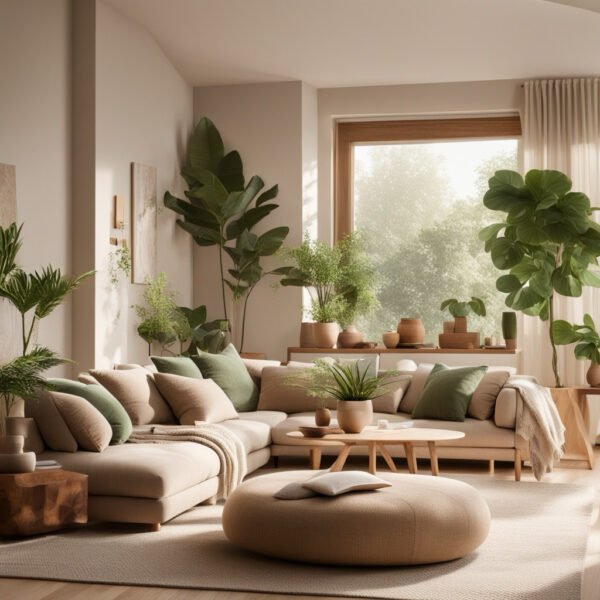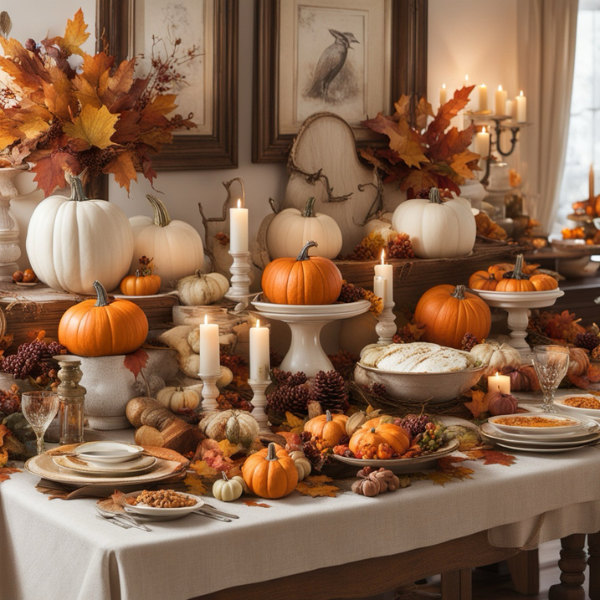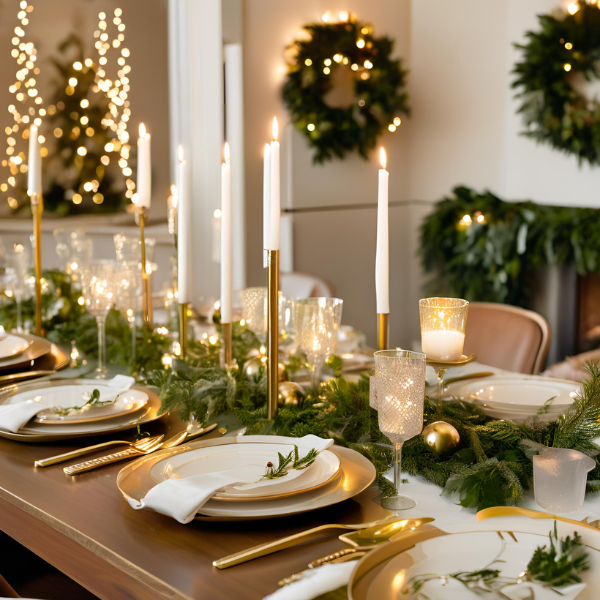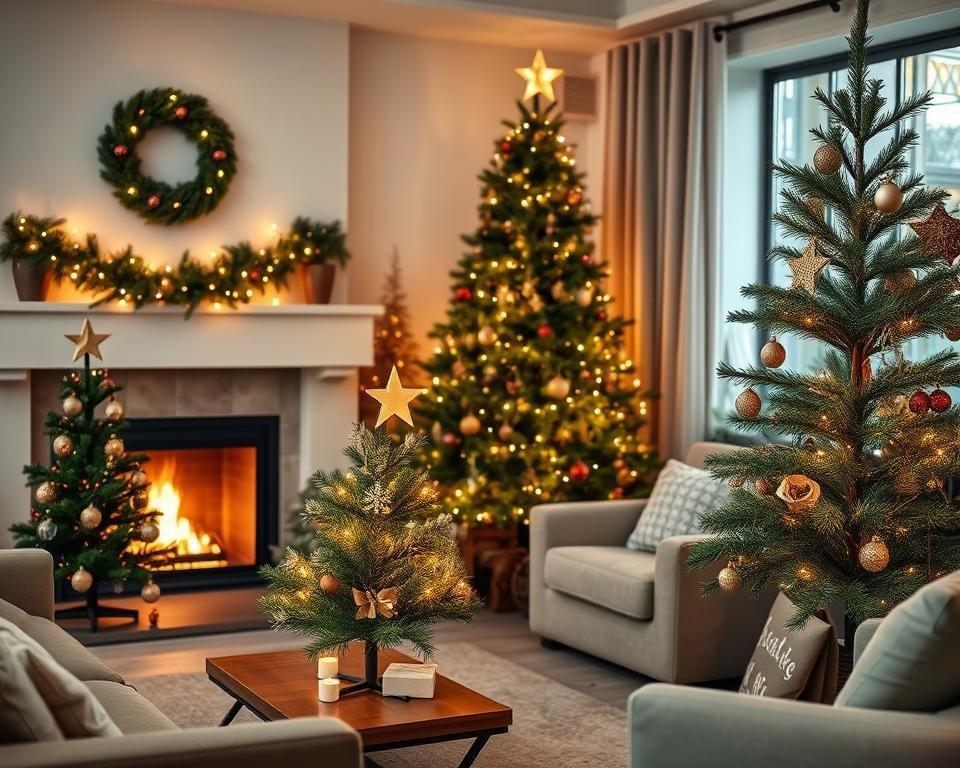Transform Your Space with these interior design style!
Looking to refresh your home this year? In 2024, interior design style trends focus on blending comfort, elegance, and individuality. Whether you prefer minimalist spaces or love bold patterns, this guide will walk you through the most popular styles. We’ll also provide practical tips on how to incorporate these trends into your home and suggest visual ideas for inspiration.
1. Organic Modern: Where Nature Meets Modernity
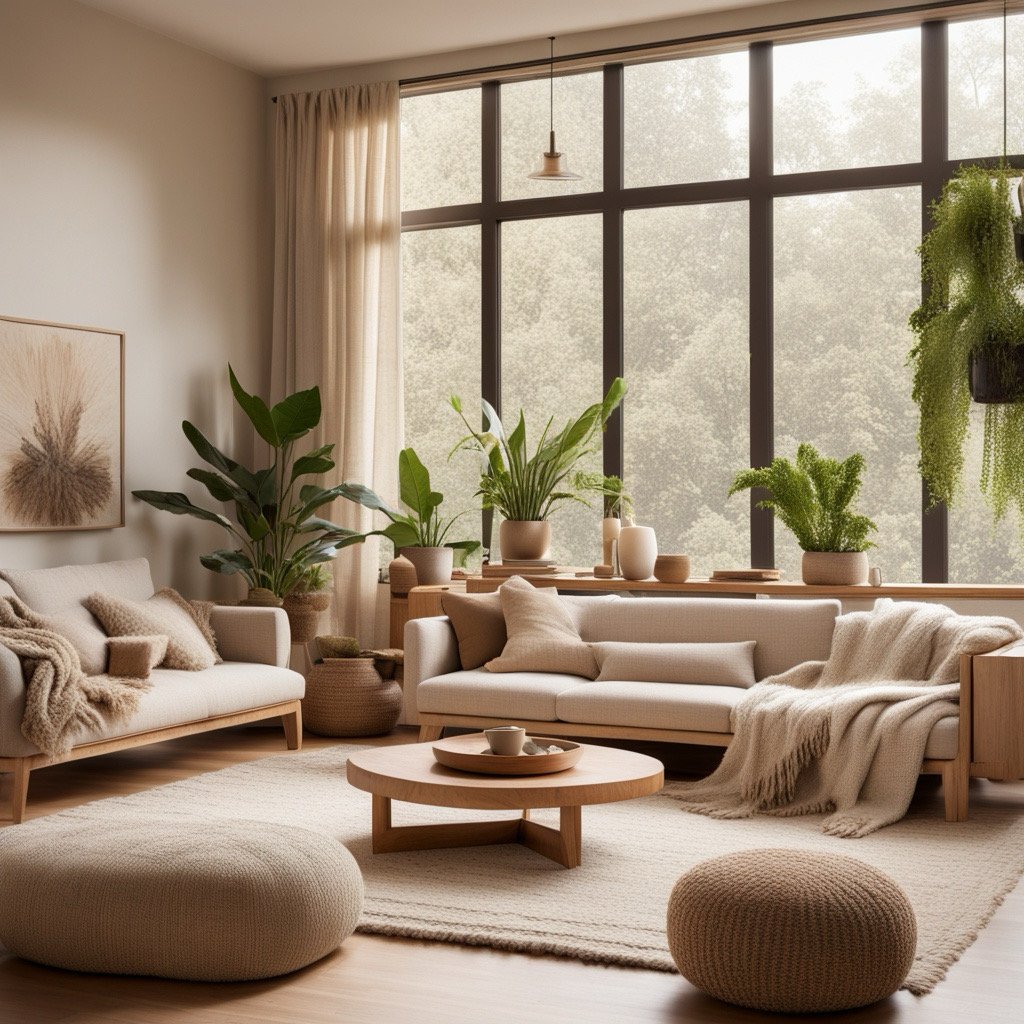
Organic Modern Interior Design
It is a popular interior design trend that fuses the sleekness of modernism with the warmth of natural materials. It emphasizes simplicity, comfort, and sustainability, creating cozy yet elegant spaces. This trend harmonizes sleek, modern elements with natural materials like wood, rattan, and organic textiles. Expect neutral color palettes, natural light, and minimal clutter.
Here are some Tips:
Lighting: Use ambient light and large windows to let in sunshine and reduce the need for artificial lighting. Introduce wooden accents or linen furniture to soften the modern look. Potted plants or hanging greenery can bring life to the space.
Furniture: Choose items with natural wood frames and neutral upholstery.
Décor: Add potted plants, ceramic vases, or linen curtains to infuse organic elements.
2. Japandi: Minimalism with a Cozy Twist
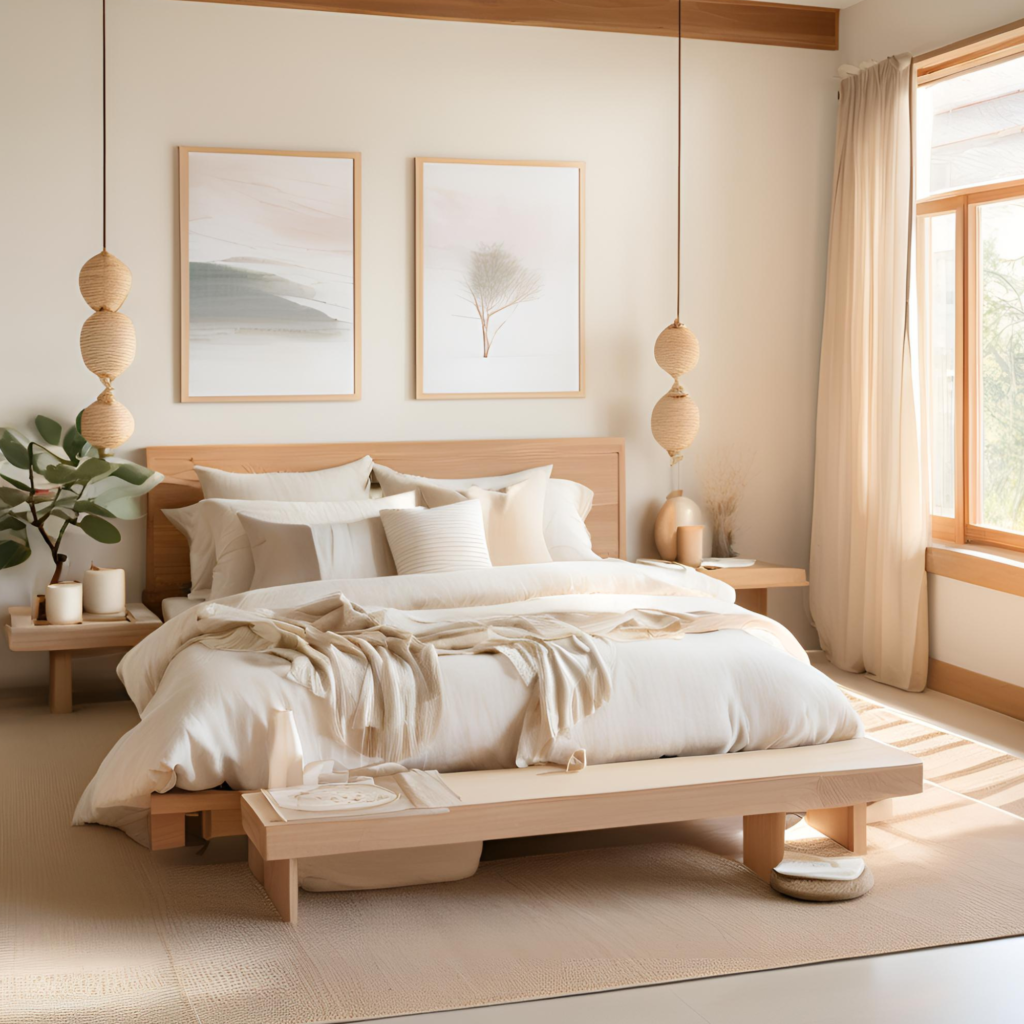
Japandi Interior Design
It is a fusion of Japanese and Scandinavian aesthetics, creating spaces that are minimalist, functional, and serene. This style combines the Japanese philosophy of “wabi-sabi” (embracing imperfection) with the Scandinavian concept of “hygge” (comfort and coziness). Japandi has gained popularity because it promotes simplicity, sustainability, and peaceful living environments. Think clean lines, natural textures, and earthy tones like beige, soft browns, and charcoal.
Tip: Choose furniture that is both beautiful and practical, such as low-profile tables or neutral-toned rugs.
3. Quiet Luxury: Timeless, Understated Elegance
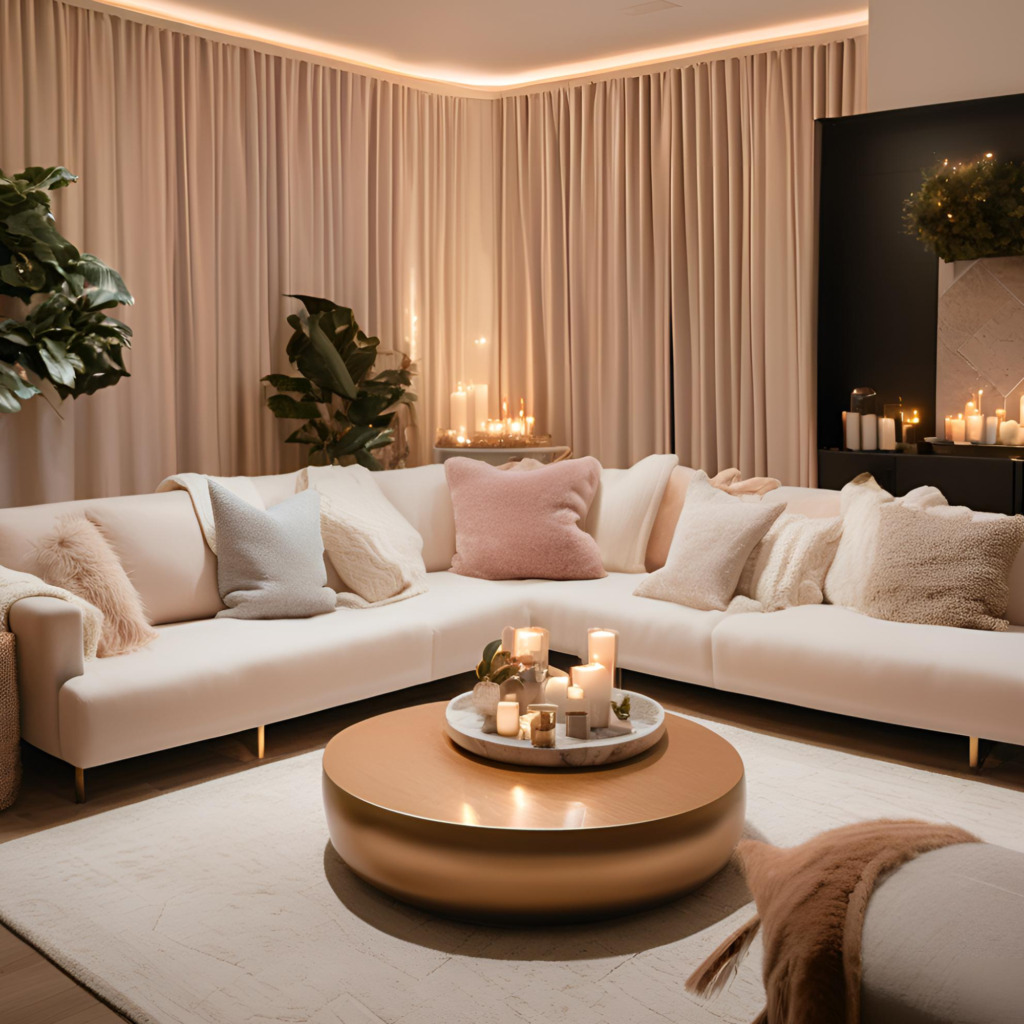
Quiet Luxury Interior Design
It is focuses on understated elegance, prioritizing quality over quantity and creating spaces that feel sophisticated without being showy. This design trend embraces timeless elements, high-quality materials, and neutral tones, offering an environment that feels both serene and luxurious. It’s the opposite of flashy opulence—think elegant textures and soothing tones.
Tips:
Choose Fewer, Better Pieces: Invest in timeless furniture that will last, such as a classic leather chair or a high-quality wool rug.
Focus on Materials: Opt for natural fabrics, handcrafted ceramics, and high-end finishes that feel good to the touch.
Neutral Base with Subtle Accents: Start with a neutral palette and layer in organic textures—like a linen sofa with a soft cashmere throw.
Declutter Thoughtfully: Keep the space neat, but leave a few personal touches, such as a vintage vase or a curated stack of books.
4. Maximalism: Embrace Bold, Personal Spaces
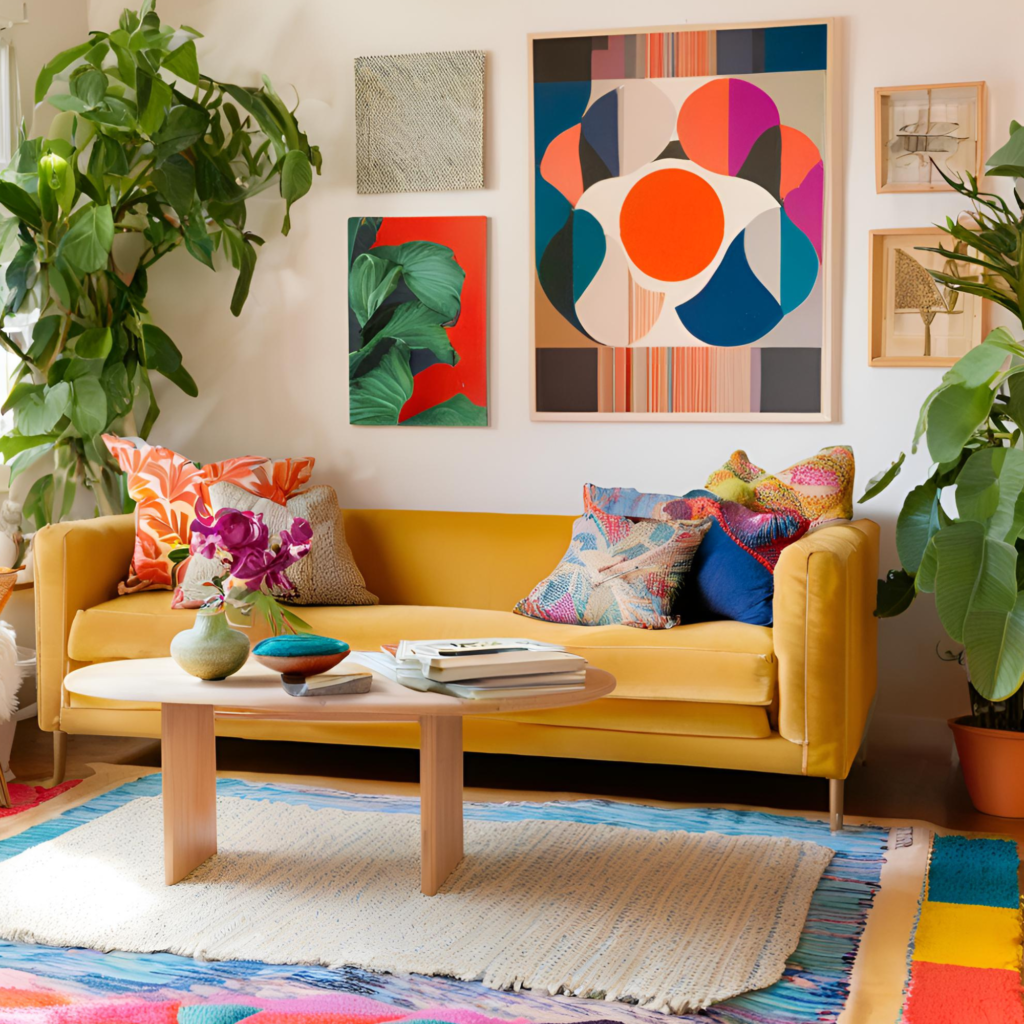
Maximalism Interior Design
Is the opposite of minimalism, celebrating boldness, creativity, and personal expression. It embraces the idea that more is more, using vivid colors, layered patterns, and curated collections to create lively, eclectic interiors. This style allows homeowners to fill their spaces with objects that tell a story, often mixing different time periods, textures, and cultural influences.
Tips for Maximalist Interiors
- Start Small: Begin with one area, such as a gallery wall, and experiment with mixing prints, textures, and colors.
- Color Cohesion: While the palette can be vibrant, try to stick to a few main colors throughout the space to create unity.
- Display with Purpose: Use open shelving or walls to display collections like books, vases, or art, ensuring it feels curated rather than cluttered.
- Comfort Matters: Balance bold décor with soft textiles and cozy furniture, so the space remains functional and inviting.
Maximalism offers an exciting way to express individuality and fill your space with pieces that inspire joy. Rather than following strict rules, this style encourages you to have fun and embrace imperfections, creating a home that’s uniquely yours.
5. Sustainable Design: Style with a Purpose

Sustainable Interior Design
It is an approach to interior and architectural design that focuses on minimizing environmental impact and creating spaces that promote long-term well-being. It emphasizes the use of eco-friendly materials, energy efficiency, waste reduction, and conscious consumption. The goal is to design homes that are both beautiful and aligned with sustainable living principles. This includes using recycled materials, energy-efficient appliances, and timeless furniture pieces to reduce waste.
Tips:
Choose Long-Lasting Furniture: Invest in timeless, well-made pieces that won’t need frequent replacement.
Repurpose Items: Consider DIY projects that upcycle old furniture or décor.
Opt for Natural Light: Maximize natural light with large windows or skylights to reduce artificial lighting needs.
Go Plastic-Free: Use glass, metal, or wood alternatives instead of plastic wherever possible.
6. Blues and Warm Neutrals: Soothing Color Palettes

Blues and Warm Neutrals Design
It is a versatile interior design style that balances the calming effect of blues with the inviting warmth of neutral tones. This pairing works well in modern, coastal, and traditional interiors, creating spaces that feel soothing, sophisticated, and grounded. These tones create a relaxing atmosphere while maintaining a sense of modernity.
Balanced Color Palette:
Shades of Blue: Think navy, indigo, sky blue, or dusty blues to evoke calmness and stability.
Warm Neutrals: Beige, taupe, cream, and soft browns add warmth, keeping the space from feeling too cold.
The Best Tips:
Accent Walls: Create a statement with a soft blue wall paired with neutral furniture.
Mix Fabrics: Use neutral-toned linen and wool with blue velvet or cotton for contrast.
Artwork: Introduce blue-toned art to tie the theme together.
Wood Accents: Add wooden furniture or frames to complement both the blue and neutral tones.
Use soft blue in spaces where you want to unwind, such as bedrooms or bathrooms. Pair it with warm neutrals like beige and taupe to keep the space balanced.
7. Functional Spaces: Making the Most of Every Corner

Functional Spaces
In today’s world, maximizing space is essential, whether in small apartments, large homes, or commercial environments. Designing functional spaces that utilize every corner effectively can enhance usability, aesthetics, and comfort.
Functional design isn’t just about beauty—it’s about utility. In 2024, there’s a focus on multi-purpose rooms like laundry-mudroom combos or home offices that double as guest rooms.
Here are some practical tips for designing and optimizing functional spaces, focusing on maximizing usability and comfort:
Tips for Creating Functional Spaces
- Assess Needs and Activities:
- Identify how the space will be used and who will use it. This helps tailor the design to specific needs, ensuring that the space is both practical and inviting.
- Prioritize Layout:
- Arrange furniture and elements to encourage flow and accessibility. Ensure there’s enough room for movement, especially in high-traffic areas.
- Use Multi-Functional Furniture:
- Choose furniture that serves multiple purposes, such as ottomans with storage, sofa beds, or coffee tables with lift-tops.
- Incorporate Smart Storage Solutions:
- Utilize vertical space with shelves, cabinets, and hooks. Consider built-in storage to keep the space organized and minimize clutter.
- Create Zones:
- Divide larger spaces into distinct areas for different activities (e.g., work, relaxation, dining) using rugs, furniture arrangement, or partitions.
- Utilize Corners Effectively:
- Install corner shelves or cabinets, use L-shaped furniture, or create cozy reading nooks to
Find The Interior Design Styles for You
Whether you prefer the simplicity of Japandi, the boldness of maximalism, or the elegance of quiet luxury, the key is to create spaces that feel right for you. Start with small changes, experiment, and let your home reflect your personality. These trends offer a perfect mix of form and function, ensuring your home is both stylish and practical. Don’t be afraid to blend multiple styles for a unique look—after all, your home should be as personal as your taste.

